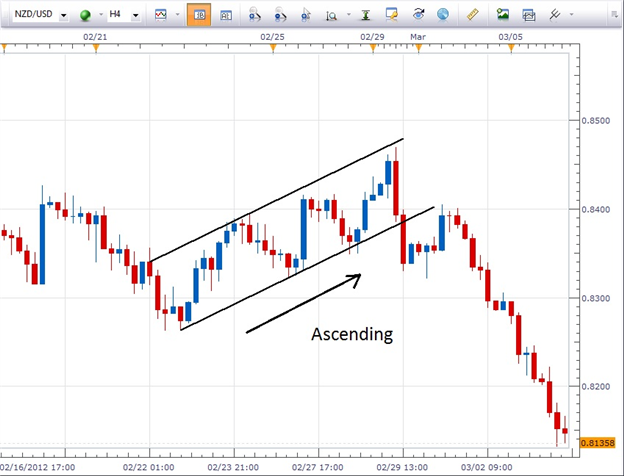
Image Source: Google
Trading channels are a key concept in technical analysis that can help traders identify potential entry and exit points for their trades. Understanding how to navigate these channels effectively can unlock profit potential and improve your overall trading success. In this article, we will explore the ins and outs of an affordable trading channels and provide tips on how to utilize them to your advantage.
The Basics of Trading Channels
Trading channels are essentially a visual representation of a security's price movements within a defined range. These channels are formed by drawing trendlines to connect the highs and lows of a security's price over a specific period of time. There are two main types of trading channels:
1. Ascending Channel
- An ascending channel is characterized by higher highs and higher lows, indicating an upward trend in the price of the security.
- Traders often look for opportunities to buy near the lower trendline of an ascending channel and sell near the upper trendline.
2. Descending Channel
- A descending channel is characterized by lower highs and lower lows, indicating a downward trend in the price of the security.
- Traders may seek to sell short near the upper trendline of a descending channel and cover their positions near the lower trendline.
Using Trading Channels to Your Advantage
Now that we understand the basics of trading channels, let's explore how you can effectively navigate these channels to improve your trading performance:
1. Identify Clear Channel Patterns
- Look for well-defined trendlines that connect multiple highs and lows to confirm the presence of a trading channel.
- Avoid forcing trendlines to fit your bias, as this can lead to inaccurate channel identification.
2. Wait for Confirmation Signals
- Consider waiting for the price to bounce off the trendlines multiple times before making trading decisions.
- Confirmation signals such as candlestick patterns or technical indicators can help validate the strength of a trading channel.
3. Set Realistic Price Targets
- Use the width of the trading channel to establish potential price targets for your trades.
- Adjust your profit targets based on the volatility and duration of the channel to set realistic expectations.
Managing Risks in Trading Channels
While trading channels can be an effective tool for identifying trading opportunities, it is important to manage risks effectively to protect your capital. Here are some tips for risk management when trading channels:
1. Place Stop-loss Orders
- Set stop-loss orders below the lower trendline for long positions and above the upper trendline for short positions to limit potential losses.
- Adjust your stop-loss levels as the price moves within the channel to protect your profits and minimize risk.
2. Consider Position Sizing
- Calculate your position size based on the distance between the entry point and the stop-loss level to ensure you are not risking more than a predetermined percentage of your account on a single trade.
- Avoid overleveraging your trades, as this can amplify losses in case the price breaks out of the trading channel unexpectedly.
Monitoring Channel Breakouts
While trading channels can provide valuable insights into potential price movements, it is essential to monitor for breakouts that may signal a change in the underlying trend. Here are some tips for identifying and responding to channel breakouts:
1. Watch for Volume Confirmation
- An increase in trading volume accompanying a breakout can validate the strength of the new trend direction.
- Volume analysis can help confirm the sustainability of the breakout and provide clues about the future price movement.
2. Wait for Pullbacks and Retests
- After a breakout, the price may pull back to retest the previous trendline, offering a second chance to enter a trade in the direction of the breakout.
- Consider waiting for the price to stabilize after a breakout before making trading decisions to avoid false breakouts.
Conclusion
Trading channels are a valuable tool for traders looking to identify potential trends and profit opportunities in the financial markets. By understanding how to navigate these channels effectively, you can improve your trading performance and unlock profit potential. Remember to use technical analysis tools and risk management strategies to enhance your trading success and protect your capital in the dynamic world of trading.
